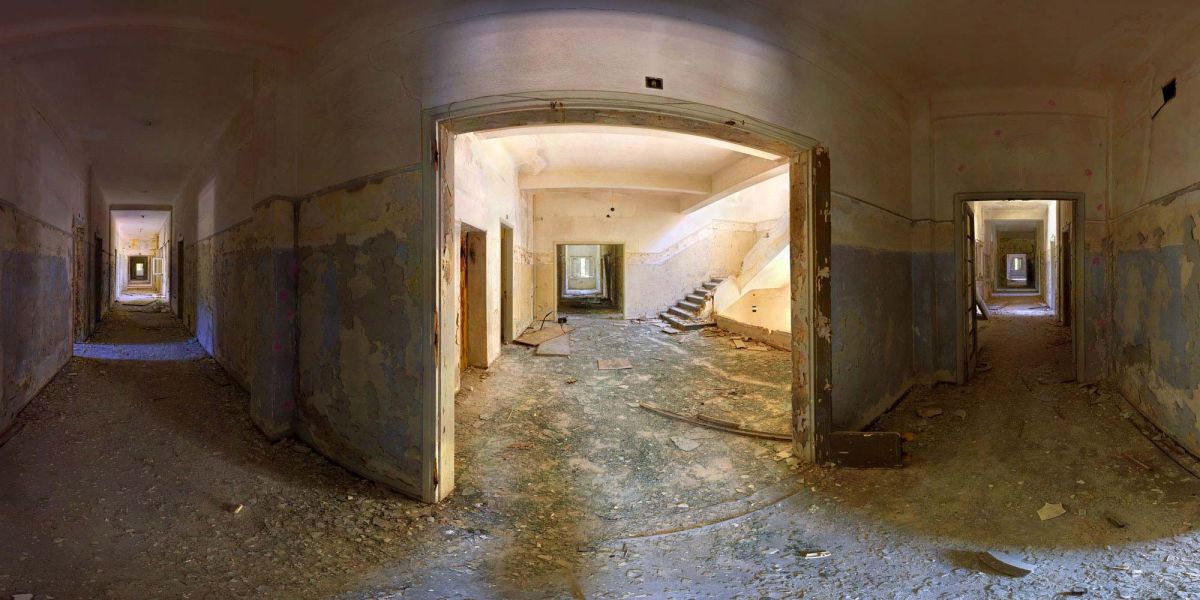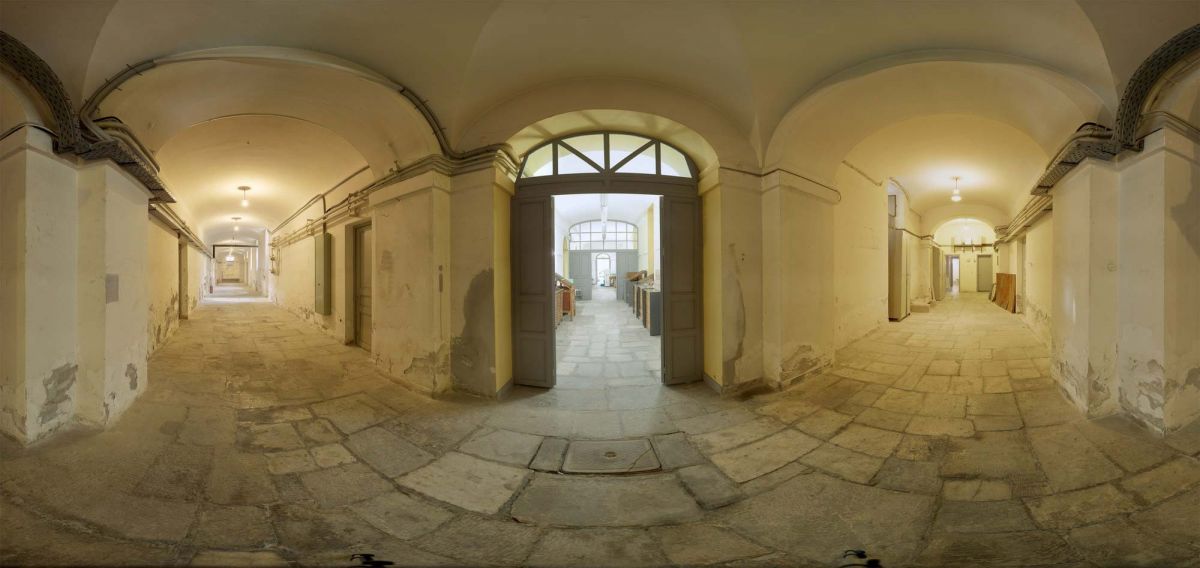NELLI AMPRAVANEL / Kathimerini, Saturday April 11TH 2009
The abandoned building has a specific aura of its own. In silence, the wear and the traces of a past life build possible stories of a forsaken world. Such a building, caught the attention of the postgraduate student of the Athens School of Fine Arts, the artist Chris Simatos, while on an excursion to Mount Parnes. The discovery of a desolate, old sanatorium acquired special meaning for the artist, whose work relates to the quest and presence of internal spaces and the trace that the presence of humans leaves on them.
Chris Simatos’ photographs of that old sanatorium are now exhibited at the Athens Art Gallery, under the general title “Familiar – Unfamiliar”. They pertain to panoramic views that curve and scan the whole of space in one level only, developing an optical field that the eye cannot really see. The corridor, the flight of stairs and the door constitute some of the favorite elements of Simatos’ photographs, as these passages seem to be continually on his mind, images that persist in the showing forth of every little detail, no matter how big. The chipped, worn-down wall, the bare foundations, the loose beams, they all bear witness to the forgotten story of a forsaken space.
For Simatos, “the great size of this abandoned building, its chaotic corridors and the wear of its every element, attribute to its deserted ‘carcass’ a certain paintability, allowing for more pictorial perspectives”.
However, the most interesting images are presented fragmented, consisting of rectangular photographic “mosaic-tiles”, that attract the audience even closer to the work. The main aim of the artist is, at the end, for “every piece to be able to stand on its own, and at the same time to invite the viewer to bring all the elements together, filling the voids”...
“During my postgraduate studies, I was exploring different ways in which I would be able to present these architectural spaces”. Apart from the fragmentation of the images, another solution was found at “the quality and the high fidelity of the photograph itself, the primary pieces of this specific work”. Simatos wants his audience to be able to discover things on its own, he wishes for the space presented in front of the viewer, as a two-dimensional photograph, to no longer be alien to him. At the end, the glossy texture of the photographs allows the viewer to recognize himself among these panoramic images, thus transforming the “familiar” into the “unfamil


